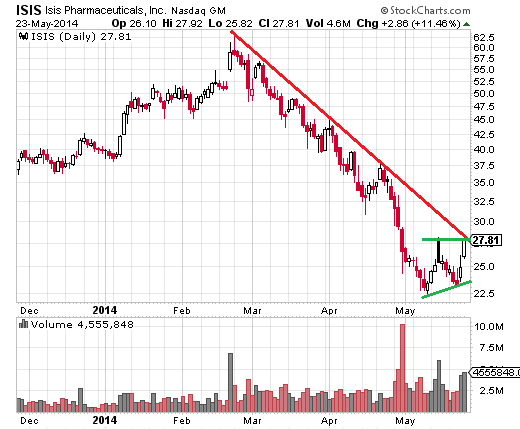Navarino investment This Asian Nation Is Poised For Steady Growth
Post on: 2 Сентябрь, 2015 No Comment

This Asian Nation Is Poised For Steady Growth
By Prableen Bajpai
The Philippines presents one of the most spectacular comeback stories in recent times. The country, which had been lagging far behind its regional peers, is now making its presence know among the world’s most vibrant economies, and is now spoken of as a tiger cub and Next Eleven economy.
The leadership of President Benigno Aquino III has provided needed stability for the archipelago nation, which has been known for its political tumult. That has allowed a revival in domestic and international business confidence for a nation that once was second only to Japan in prosperity. Need proof? The Philippines recently hosted the World Economic Forum on East Asia, where corporate leaders, policymakers and the press from across the globe met to talk business.
The Philippine economy has witnessed a tremendous transition to growth over the last decade. It has managed stellar returns and amassed huge foreign exchange reserves while keeping inflation and interest rates under check. Despite Typhoon Haiyan (known as ‘Yolanda’ in the Philippines), which hammered the country in 2013, the Philippine economy grew by 7.2% last year, making it the fifth-largest in Southeast Asia. That compares to to a 4.7% average from 2008-2012. According to research by IHS Inc. the Philippines economy is projected to have a long-term economic growth of 4.5-5% (per year) from 2016 to 2030, reaching $1.2 trillion by 2030. (For related reading, see: Make A Play For Asia’s Frontier )
Stocks Respond to Growth
Backed by strong economic growth, Philippine stocks have outpaced regional peers. In fact, the Philippine market has been in an extended uptrend over the last four years, and has withstood global headwinds and weakening confidence in emerging markets. The markets PSEi Index posted YTD returns of over 16% as of early June 2014, led by sectors such as business process outsourcing (BPO ), cement and consumer products.
The availability of a skilled and educated work force that is proficient in English along with low labor costs make the Philippines a preferred BPO destination. The BPO sector is expected to grow rapidly and offer employment to approximately 110,000 additional workers over the next two-to-three years. Interestingly, there is no publicly listed company that derives the bulk of its revenue from the BPO business. Instead, investors can allocate to companies that merely benefit from BPO, such as real estate. Leading names in this category are Robinsons Land Corp. (RLC ), SM Investments Corp. (SM ), SM Prime Holdings, Inc. (SMPH ), Megaworld Corp. (MEG ) and Ayala Land, Inc. (ALI ).
Rising infrastructure investment, along with need to rebuild after last year’s typhoon and earthquakes (the nation sees frequent seismic and volcanic activity), means that cement companies could be a good play. Companies like Holcim Philippines, Inc. (HLCM ) and Lafarge Republic, Inc. (LRI ) stand to benefit.
And in a nation of roughly 100 million people, the consumer products sector should not be ignored. Companies to study include Universal Robina Corp. (URC ), Pepsi-Cola Products Philippines, Inc. (PIP ) and RFM Corp. (RFM ). Similarly, energy producer First Gen Corp. (FGEN ) should be considered.
How to Gain Access?
- Direct Route

One way international investors can access individual Philippine stocks is through a local brokerage house that serves international clients. Investors content with paying the higher commissions by going this route can access a wide array of sectors and stocks, not to mention have more flexibility on entering and exiting positions. Some well-known brokers include Citiseconline. FirstMetroSec and BPItrade.
- American Depositary Receipts (ADRs)
Access via ADRs is a more conventional route, but your choice is limited to the Philippine Long Distance Telephone Co. (PHI ), the only Philippine company currently trading on NYSE. There are many companies that trade on the pink sheets or over the counter (OTC ), however.
- Mutual Funds
Conservative investors interested in accessing the Philippine market, albeit somewhat indirectly, can choose diversified Asia-focused mutual funds. as there are no funds that invest exclusively in the Philippines. Most funds have small allocations to the Philippines, though, because market values in the country tend to be small by comparison.
- Exchange-Traded Funds (ETFs)
Gaining access to the Philippines market through an ETF is a convenient option. Investors can pick either a general ETF that features the Philippines or a Philippine-focused ETF that offers exclusive exposure to the country. The only ETF focused solely on the Philippine markets is the iShares MSCI Philippines Investable Market Index Fund (EPHE ), which offers exposure to around 44 companies and has a net asset value of about $354 million. The fund’s top-five holdings are Ayala Land, Inc. (ALI ), Universal Robino Corp. (URC ), BDO Unibank, Inc. (BDO ), JG Summit Holdings, Inc. (JGS ) and Philippine Long Distance Telephone Co. (TEL ). (For more on this topic, see: Five Minute Guide To Philippines ETF Investing )
The Bottom Line
The challenge for the Philippine economy lies in the sustainability of economic growth. Its economy is primarily driven by what’s arguably an overreliance on the BPO sector and remittances from over 11 million overseas Filipino workers. Poverty and unemployment remain salient issues, as well as an uneven distribution of wealth. The countrys business climate needs to be improved to attract foreign direct investment FDI namely into into manufacturing and tourism and to mobilize domestic investment. With newfound political stability and a large, skilled, and motivated workforce, many are betting that the Philippines will rediscover past prosperity.














